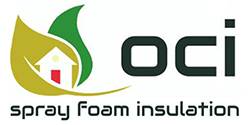Calculating the cost of spray foam insulation involves considering several factors, and the process can vary based on whether you are estimating the cost for a DIY project or seeking quotes from professional contractors. Here’s a general guide for calculating spray foam insulation costs:
DIY Spray Foam Insulation:
- Determine Coverage Area:
- Measure the area or areas that require insulation. Calculate the square footage (length x width) of the surfaces you plan to insulate, including walls, ceilings, or attics.
- Select Spray Foam Kit:
- Choose a DIY spray foam insulation kit that is suitable for your project. Kits come in different sizes and formulations, so select one that matches the square footage you calculated.
- Check Coverage Rate:
- Review the manufacturer’s specifications for the selected kit to determine the coverage rate per square foot. This information is typically provided on the product packaging or in the product documentation.
- Estimate Quantity Needed:
- Divide the total square footage of the project by the coverage rate per square foot to estimate the number of kits you’ll need. It’s a good idea to purchase a little extra to account for any potential waste or areas that may require thicker insulation.
- Cost per Kit:
- Multiply the number of kits needed by the cost per kit to get an estimate of the material cost.
Professional Spray Foam Insulation:
- Request Quotes:
- Contact multiple insulation contractors in your area and request quotes for your project. Provide details about the size and scope of the project, as well as any specific requirements.
- Detailed Estimates:
- Contractors will typically provide detailed estimates that include the cost of materials, labor, equipment, and other associated expenses. Review these estimates carefully to understand the breakdown of costs.
- Compare Quotes:
- Compare quotes from different contractors, taking into account the types of spray foam used, the thickness of the insulation, and the overall scope of the project.
- Additional Considerations:
- In addition to material and labor costs, consider other factors such as the contractor’s experience, reputation, and warranty offerings.
When calculating costs, it’s essential to consider the type of spray foam (open-cell or closed-cell), the thickness of the insulation, and any specific requirements of the project. Keep in mind that professional installation may yield more accurate and effective results compared to a DIY approach, especially for larger or more complex projects. Always follow safety guidelines and consider consulting with professionals to ensure the best outcomes.

Recent Comments